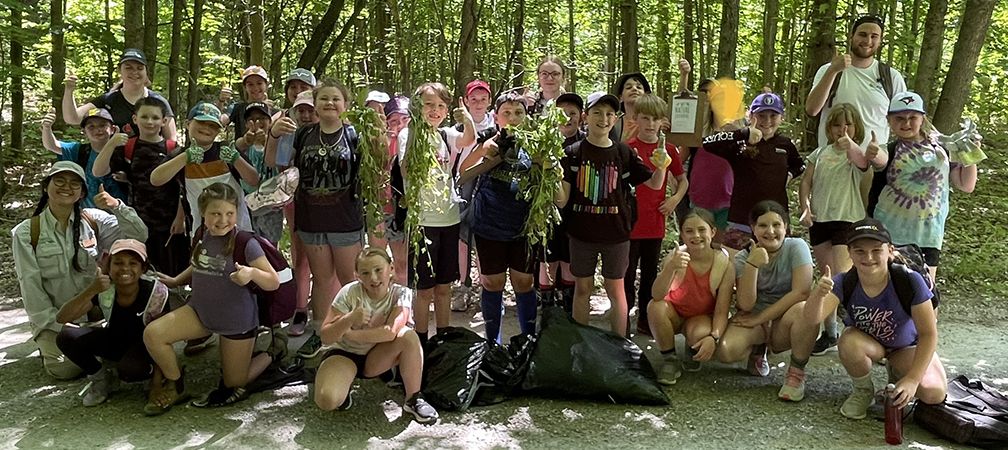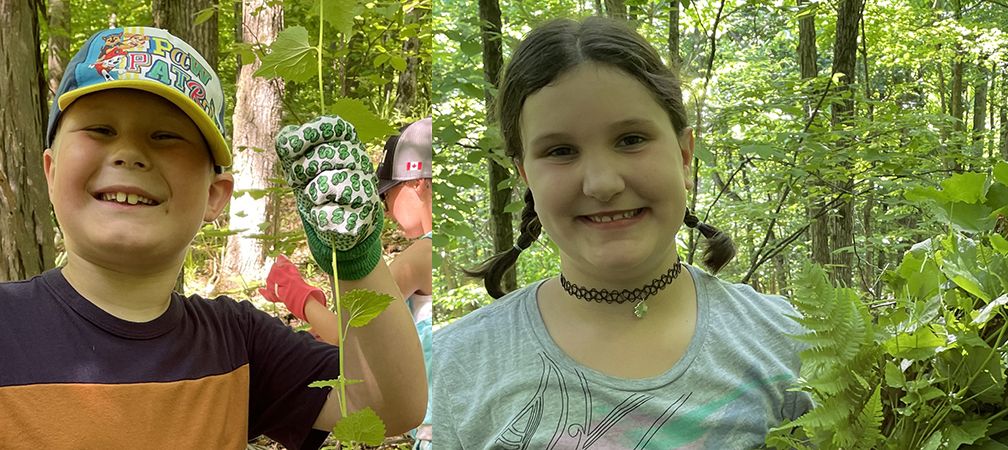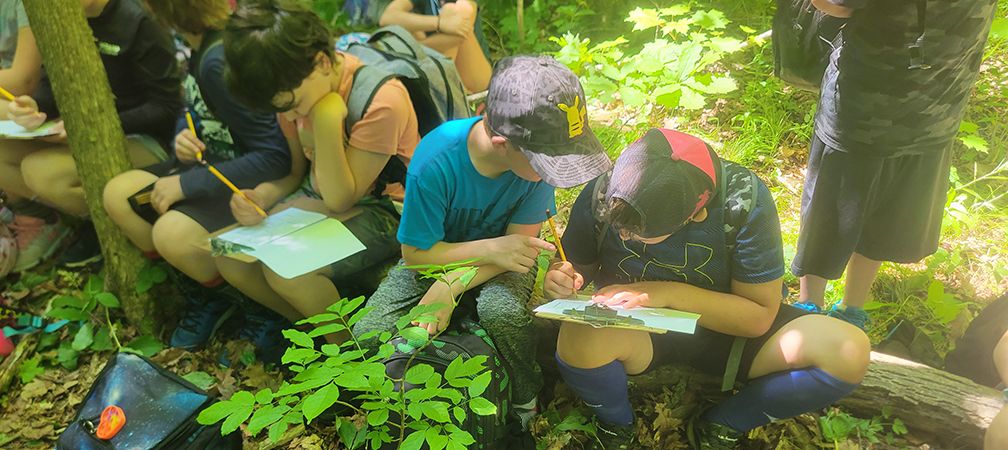Ontario Nature Blog
Receive email alerts about breaking conservation
and environmental news.
© Lora Denis
Hiking through the forest to look for salamanders © Nhu Le
At Ontario Nature, we have amazing opportunities to connect with youth on our nature reserves. One of these annual opportunities happens with a school near Gananoque, eastern Ontario. Bringing the classroom outdoors is so invigorating – especially seeing the students find their own inspiration and curiosity. According to their teacher, Lisa Chitty, “It’s direct and tangible learning for kids. They are always living in the moment and being able to give them moments in nature is incredibly rewarding.”
Recently, I helped plan and host a garlic mustard pull event in the biodiverse Frontenac Arch area. Since 2014, Ontario Nature has been hosting this event with local youths at our Lost Bay Nature Reserve to tackle this invasive species and build community awareness. The nature reserve is home to 24 species at risk, including Broad Beech Fern, Butternut, and Black Ash, all of which are struggling to hold their ground elsewhere in the province. This event was hosted in collaboration with the Thousand Islands Watershed Land Trust.

On a sunny spring day, we gathered with the collective goal of removing as much garlic mustard as possible. We started the morning with a brief introduction to the impacts of this invasive species. We were thrilled to hear that the students had learned about invasive species in the classroom.
According to the Invasive Species Centre, garlic mustard is widely dispersed by humans and pets. Before and after entering the forest, we cleaned our shoes of seeds to limit the spread of this and/or other invasive species.
Within a single hour, we collected three garbage bags worth of garlic mustard! It was wonderful to see the students’ excitement and commitment to restoring the landscape.

Following the garlic mustard pulling, we hiked in the forest and searched under logs and rocks for salamanders. During the hike, we highlighted the geological history and biodiversity of the Frontenac Arch region, in which the Lost Bay Nature Reserve resides on. We ended our hike with nature journalling, an activity to record our personal connection to nature. It was a great way to end the event, as it encouraged reflection on the meaningful ways in which we interact with the natural environment.

Invasive species removal is one hands-on way in which we continue to protect and restore the Frontenac Arch region. If you would like to be part of the continual protection and conservation of this biodiverse region, we invite you to contribute towards the 50-acre expansion of the Lost Bay Nature Reserve.
This event was made possible with support from the TD Friends of the Environment Foundation.

Gananoque Lake Nature Reserve © Smera Sukumar